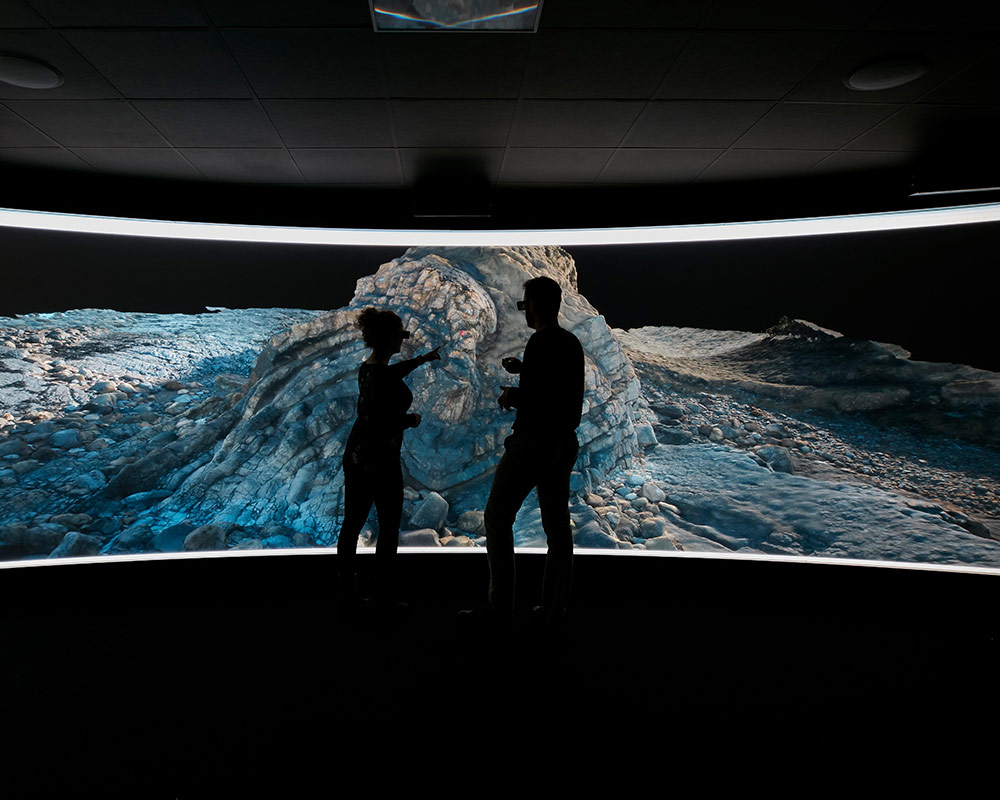Discovery Trail

George Bruce
This building is full of amazing equipment that helps us explore the oceans, as well as some of the things we collect when out on our research expeditions. There is a rock drill that we can deploy to 4,000 m deep, where it can then dig 50 metres below the seabed. 4,000 m is nearly the distance from here to Edinburgh airport, as the crow flies. And 50 m is the length of 5 buses - that's a very big drill!
Within the building are loads of deep-sea cores that we collect with rock drills to learn more about the ocean floor. Deep-sea cores are long cylinders of the Earth's crust, drilled up from beneath the sea floor. When the cores shown here are arranged end to end, they show a glimpse of the Earth's past geology and climate. Like tree rings, each layer in the core records conditions about the atmosphere – oxygen isotopes, methane concentrations, dust content, even volcanic eruptions – in the sediment and dead microorganisms such as foraminifera.
Research Bite
Find out more in this Research Bite with Andrew Sweetman. Professor Sweetman is the leader of the Deep-Sea Ecology and Biogeochemistry research group and a professor of deep-sea ecology at the Lyell Centre for Earth and Marine Science and Technology.
How do we catalogue and explore the biodiversity of the ocean?
Explore and colour the deep sea and find out some amazing ocean facts.